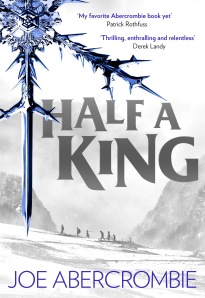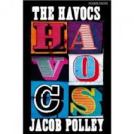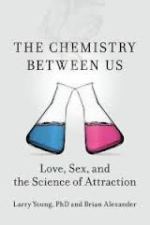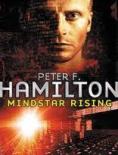Susan May Oke
·
July 4, 2014
·
Book Review
·
book review, Fantasy, First Law Trilogy, Half A King, Joe Abercrombie, Locus, review, World Fantasy, Writing, YA
 Just received my copy of Half A King by Joe Abercrombie. I’ve been waiting for it to arrive for months and now can’t wait to read it. This is Abercrombie’s first foray into the YA market—a market that I feel will devour his work and hound him for more.
Just received my copy of Half A King by Joe Abercrombie. I’ve been waiting for it to arrive for months and now can’t wait to read it. This is Abercrombie’s first foray into the YA market—a market that I feel will devour his work and hound him for more.
At World Fantasy Con in Brighton last year, I listened with rapt attention as Abercrombie read the opening chapter of Half A King. It contained the now familiar—and much loved—accents of tension and gritty violence.
One audience member asked wryly: I thought you said this was YA?
Abercrombie replied with his usual humour: What? I can’t say ‘fuck’?
Humour aside, as Abercrombie explained in a recent (June) interview with Locus magazine, this novel is aimed at the ‘top end’ of the YA market. The book is shorter than his previous offerings, a modest 80k, and my only concern is romping to the end and being left panting for more. The sequel is planned for February 2015, and the final part of the trilogy in the autumn of that same year. Looks like he’s going to be VERY busy!
If you haven’t read any of Abercrombie’s work, there is plenty out there for adults:
The First Law Trilogy (The Blade Itself; Before They Are Hanged; Last Argument of Kings).
Plus three stand-alone stories set in the same world (Best Served Cold; Heroes; Red Country)
I started with the stand-alone books, become totally hooked and worked my way back to the First Law Trilogy. ‘Gritty’ is a word that is often used to describe Abercrombie’s work; his writing is also vivid, engaging and intense. Plus, he tells a bloody good story!
Susan May Oke
·
February 22, 2013
·
Book Review
·
evolution, nanotechnology, nexus, ramez naam, review, science fiction, telepathy, Writing
Ramez Naam – Angry Robot
 This book is set in the near future and looks at the impact of nanotechnology, specifically its ability to engender a form of telepathy in humans—the ability to link minds. As with all step-ups in technology, the impact of the drug Nexus has a multiplicity of possible benefits and opportunities for misuse—implications that the author brings to the fore through the struggles of Kaden Lane, the main protagonist.
This book is set in the near future and looks at the impact of nanotechnology, specifically its ability to engender a form of telepathy in humans—the ability to link minds. As with all step-ups in technology, the impact of the drug Nexus has a multiplicity of possible benefits and opportunities for misuse—implications that the author brings to the fore through the struggles of Kaden Lane, the main protagonist.
Kaden is a young researcher who has redesigned Nexus—an illegal drug—to allow the drug’s nanostructures to be pre-programmed. The book opens with Kaden carrying out a field trial of the ‘Don Juan’ protocol. The ‘Don Juan’ protocol analyses his interactions with a young woman and controls his responses, changing a shy and diffident young man into a confident, smooth operator.
Susan May Oke
·
January 19, 2013
·
Event Reviews
·
books, Jacob Polley, literature, Paul Farley, poetry, review, Simon Armitage, T S Eliot Prize
As a novice in the world of poetry I attended the Shortlist Readings of the T S Eliot Prize with a sense of excited anticipation. The event was well organised and ran very smoothly, and I have to say that in the person of eight out of ten poets (rather like ‘eight out of ten cat owners’) my expectations were fully met and in several cases exceeded.
Nothing can really match an accomplished poet reading his/her own work. They were, without exception, consummate performers. The Festival Hall housed an audience of around two thousand who listened in silent awe to each poet deliver a sample of the best of their work this year.
 Simon Armitage gave a witty introduction to his reading, speculating on ‘what can I do to win this year?’—his last collection Seeing Stars was shortlisted in 2010. He read a section of his contemporary retelling of the four thousand line alliterative Morte Arthure (The Death of King Arthur). I enjoyed it much more that I expected to. His writing has certainly caught my attention, and I shall be looking back at his previous works with more than a little interest. I have also been reliably informed that he is a speaker well worth listening to.
Simon Armitage gave a witty introduction to his reading, speculating on ‘what can I do to win this year?’—his last collection Seeing Stars was shortlisted in 2010. He read a section of his contemporary retelling of the four thousand line alliterative Morte Arthure (The Death of King Arthur). I enjoyed it much more that I expected to. His writing has certainly caught my attention, and I shall be looking back at his previous works with more than a little interest. I have also been reliably informed that he is a speaker well worth listening to.
Paul Farley gave a very entertaining reading of several of his poems from The  Dark Film, waving airily in what he thought might be the direction of the Royal Box, glasses perched precariously on the tip of his nose. His last poem finished with the declaration: ‘Oh fuck! I’m the queen.’
Dark Film, waving airily in what he thought might be the direction of the Royal Box, glasses perched precariously on the tip of his nose. His last poem finished with the declaration: ‘Oh fuck! I’m the queen.’
 Jacob Polley topped them all with his rendition of ‘Langly Lane’ from The Havocs. He was the only poet to receive spontaneous applause after reading his first poem. His book is now in my hands and I’m happy to say the rest of his work is of the same wonderfully high standard.
Jacob Polley topped them all with his rendition of ‘Langly Lane’ from The Havocs. He was the only poet to receive spontaneous applause after reading his first poem. His book is now in my hands and I’m happy to say the rest of his work is of the same wonderfully high standard.
He should have won.
Susan May Oke
·
January 12, 2013
·
Book Review
·
Bold as Love, brian alexander, chemistry between us, epigenetics, gender, Gwyneth Jones, larry young, oxytocin, review, Writing
 This is an engaging book that addresses questions such as:
This is an engaging book that addresses questions such as:
- How does love begin?
- What drives mothers to care for their babies?
- What accounts for the gender of the people at whom we aim our affection?
- What does it mean to say one is male or female?
The book is based on rigorous research using data from both animal and human subjects. It has been written to be accessible to a non-scientific reader. In order to build and develop the theoretical arguments to address the above questions, Young and Alexander describe and explain the significance of the experiments carried out—some readers may find this aspect of the book disturbing.
Young and Alexander manage to convey complex theory in a clear and concise manner. Effective use is made of wry humour to lighten what could be quite dense material. Diagrams are occasionally used to help clarify particular issues, though on a personal note I have to admit that I did occasionally skip over some of the more technical terms.
Susan May Oke
·
January 5, 2013
·
Book Review
·
A Quantum Murder, climate change, Greg Mandel, Mindstar Rising, Peter F Hamilton, review, science fiction, SF, The Nano Flower, Writing
The cover of the 17th November 2012 edition of New Scientist headlined:
CLIMATE CHANGE
Five years ago we feared the worst. But it’s looking even worse than that.
It seems that the climate models were wrong. The rate-of-loss of arctic ice, the increase in rainfall intensity, and the searing heat waves have already reached the levels that were predicted for the end of this century. As I read the dire warnings of more extreme weather in the northern hemisphere, the current and expected fall in crop yields in the UK due to heavy rainfall, the need to develop heat-tolerant crop varieties, and the likely flooding of many low-lying cities—the world created by Peter F. Hamilton in the Greg Mandel trilogy came to mind.
 Hamilton’s first novel, Mindstar Rising, is set in England, where global warming has reshaped the physical, social and economic state of the country. Note that I said England; political chaos and industrial collapse have resulted in Wales and Scotland existing as separate political and economic entities. In the novel, massive flooding created a huge refugee problem, necessitating the requisition of buildings (shops, hotels etc.) under the government’s ‘one home policy’ to provide emergency housing. This re-imagined England has spent the past twelve years sweltering under bright hot skies, with high humidity and an annual rainy season. Most of the familiar plants and trees are gone, replaced by more tropical varieties. Low lying areas used for farming have been reduced to mud-clogged marshlands and bogs, and every available green space has been appropriated for raising crops.
Hamilton’s first novel, Mindstar Rising, is set in England, where global warming has reshaped the physical, social and economic state of the country. Note that I said England; political chaos and industrial collapse have resulted in Wales and Scotland existing as separate political and economic entities. In the novel, massive flooding created a huge refugee problem, necessitating the requisition of buildings (shops, hotels etc.) under the government’s ‘one home policy’ to provide emergency housing. This re-imagined England has spent the past twelve years sweltering under bright hot skies, with high humidity and an annual rainy season. Most of the familiar plants and trees are gone, replaced by more tropical varieties. Low lying areas used for farming have been reduced to mud-clogged marshlands and bogs, and every available green space has been appropriated for raising crops.
Peterborough is the new industrial capital—referred to in the book as the new Hong Kong. ‘If you can’t get it in Peterborough, you can’t get it anywhere.’
Susan May Oke
·
December 2, 2012
·
Book Review
·
Joe Abercrombie, Red Country, review
Red Country is the third of Abercrombie’s stand-alone books, after Best Served Cold and The Heroes. While all three books can be read in isolation they are based in the same world as The First Law trilogy and feature some well-loved characters.
Abercrombie draws, in part, on his experience as a film editor when writing and he has likened Best Served Cold to a gangster/revenge movie set in something like a Machiavellian renaissance Italy, and The Heroes to a big-picture war film like Waterloo or A Bridge Too Far. His new book, Red Country, with its air of ‘narrowed eyes’ and ‘clenched jaws’, is firmly set in the fantasy equivalent of a good western.
 Just received my copy of Half A King by Joe Abercrombie. I’ve been waiting for it to arrive for months and now can’t wait to read it. This is Abercrombie’s first foray into the YA market—a market that I feel will devour his work and hound him for more.
Just received my copy of Half A King by Joe Abercrombie. I’ve been waiting for it to arrive for months and now can’t wait to read it. This is Abercrombie’s first foray into the YA market—a market that I feel will devour his work and hound him for more.




